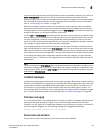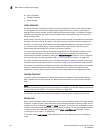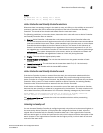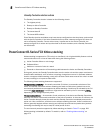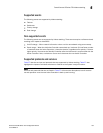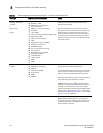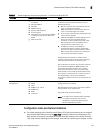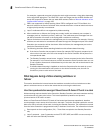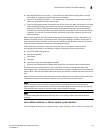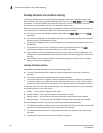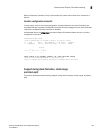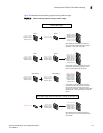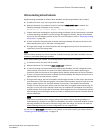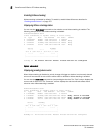
PowerConnect B-Series FCX Configuration Guide 167
53-1002266-01
PowerConnect B-Series FCX hitless stacking
5
• Hardware Abstraction Layer (HAL) – This includes the prefix-based routing table, next hop
information for outgoing interfaces, and tunnel information.
• Layer 3 IP forwarding information – This includes the routing table, IP cache table, and ARP
table, as well as static and connected routes.
• Layer 3 routing protocols are not copied to any of the units in the stack, but remain in init state
on the Standby Controller until a switchover occurs. Peer adjacency will be restored after a
switchover. If BGP4 or OSPF graceful restart are enabled during a switchover, the Standby
Controller (new Active Controller) will initiate a graceful restart and a new set of routes will be
relearned. The new set of routes will be the same as the old routes, except in the case of a
network change.
When control protocols are synchronized and protocol synchronization timers have expired, the
Standby Controller will be in hot-standby mode, meaning the Standby Controller will be ready to
take over as the Active Controller. In the event of a switchover, the Standby Controller will pick up
where the active module left off, without interrupting data traffic.
After baseline synchronization, any new events that occur on the Active Controller will be
dynamically synchronized on the Standby Controller. Examples of such events include:
• CLI/HTTP/SNMP configurations
• CPU receive packets
• Link events
• Interrupts
• Layer 2 and Layer 3 forwarding table updates
• Dynamic user authentication updates such as 802.1X or multi-device port authentication
Dynamic events are synchronized in such a way that if the Active Controller fails before fully
executing an event, the Standby Controller (newly Active Controller) will execute the event after the
failover. Also, if the Active Controller aborts the event, the Standby Controller will abort the event as
well.
After a switchover, the new Active Controller receives updates from the stack members and sends
verification information to the stack members to ensure that they are synchronized.
NOTE
If there is no Active Controller after a reload, the bootup standby assumes the active role in
approximately 60 seconds without a reload. A bootup standby is the device that was the Standby
Controller before the reload. It may not be the current Standby Controller.
NOTE
The events described above occur internally and do not create or affect the external network
topology.
How a Hitless switchover or failover impacts system functions
Fora description of the feature’s impact to major system functions, refer to Table 37 on page 164.



